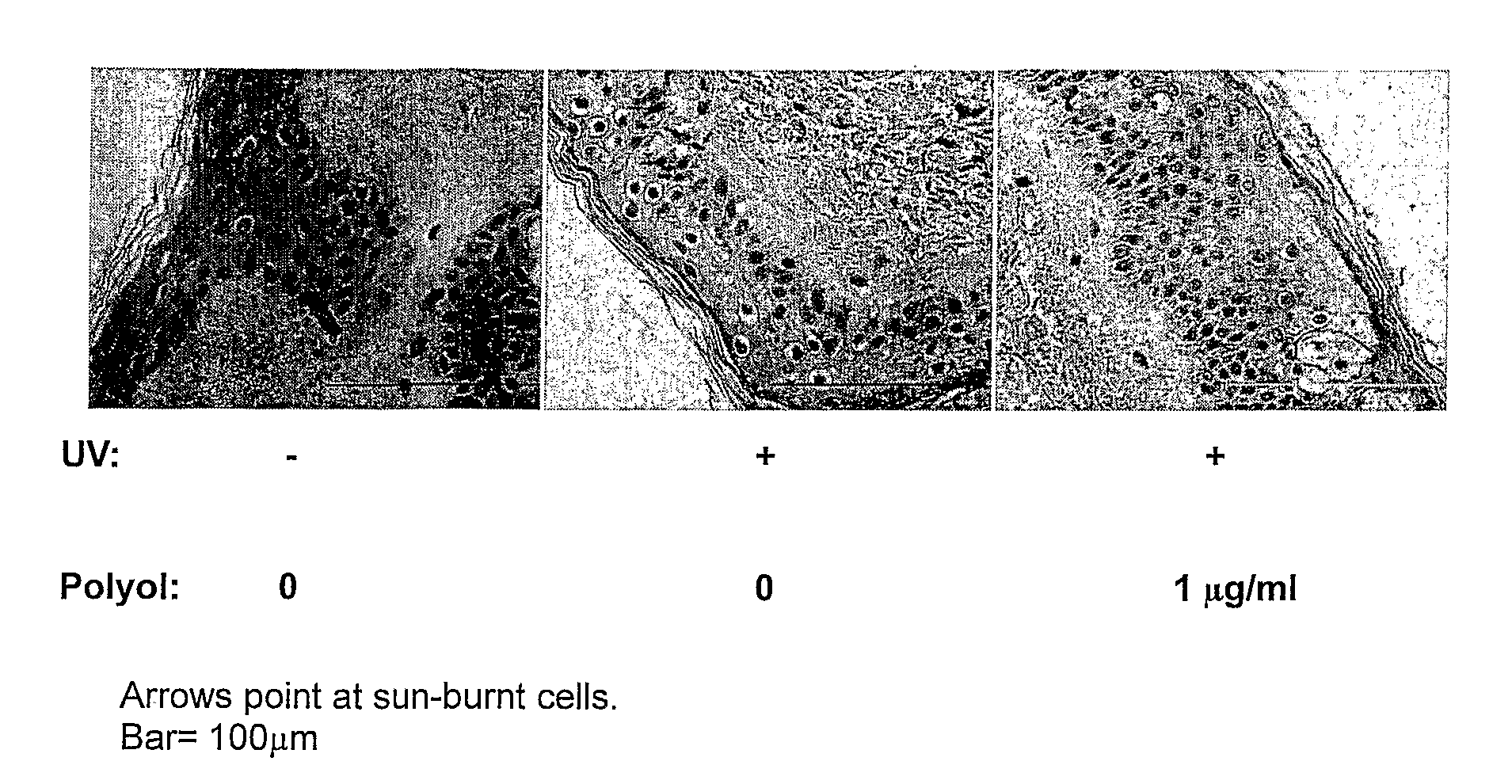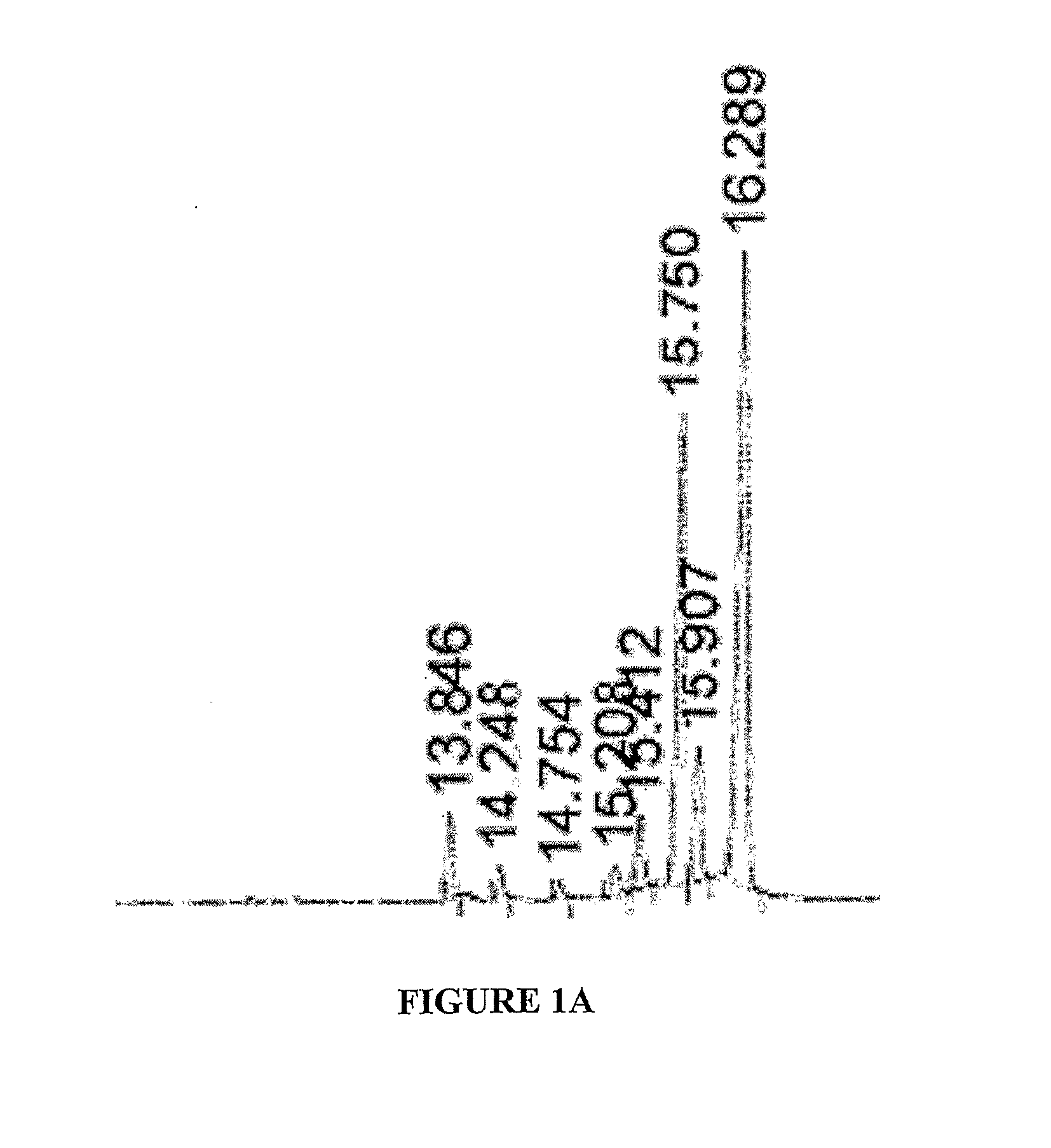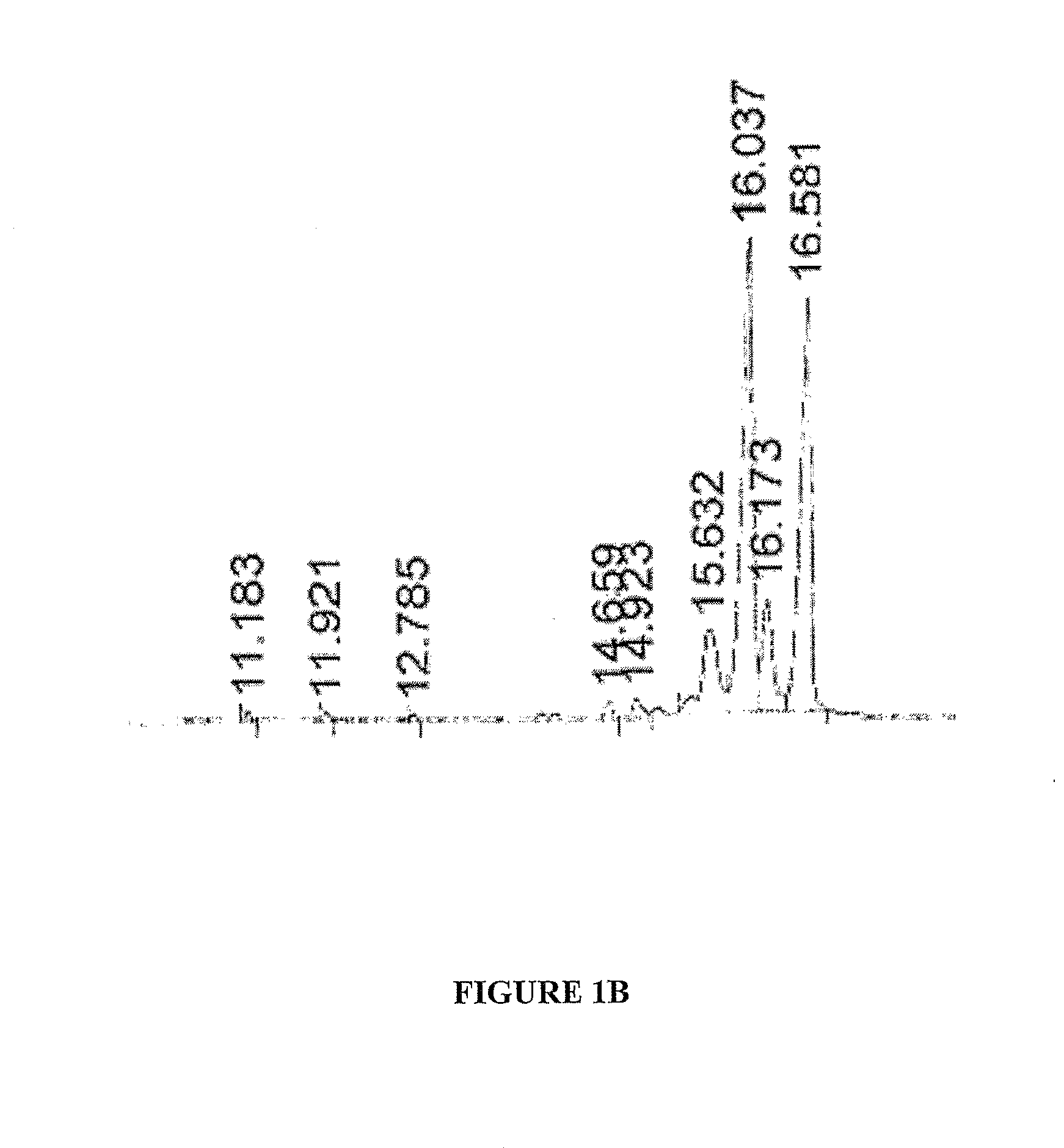Cosmetic compositions comprising polyhydroxyltate fatty alcohols and derivatives and uses thereof
a technology of polyhydroxylated fatty alcohol and cosmetic compositions, applied in the field of cosmetics, can solve the problems of oxidative damage, overpowering the antioxidant capacity of the skin, and generating free radicals that damage cells and destroy the areas of the skin, so as to prevent and/or reverse the damage caused to the skin of a subject.
- Summary
- Abstract
- Description
- Claims
- Application Information
AI Technical Summary
Benefits of technology
Problems solved by technology
Method used
Image
Examples
example 1
Isolation of Natural Polyhydroxylated Fatty Alcohols from Avocado Seeds and their Alkaline Hydrolysis
[0129]Avocado seeds were separated from the avocado pear followed by freezing and lyophylization. 10 kg of lyophilized and powdered seed was consequently extracted using hexane in Soxhlet apparatus for 14 h.
[0130]Organic solvents were evaporated in a rotor evaporator at temperature intervals of 40-60° C., at a pressure of about 30 millibar. Extracted compounds were re-dissolved with two volumes of hexane or petroleum ether (as a non-limiting example of a non-polar solvent) and then were put into a cold room having a temperature in the range of 2-8° C. for about 12 hours for the process of cool crystallization.
[0131]Crystallized compounds were separated from the solvent by filtration in Worthman filter paper.
[0132]The process yielded 30 g of crystalloid compounds. Elution profile and chemical structure according to GC / MS and HPLC / MS-ECI analysis are presented in FIGS. 1A and 2. No fur...
example 2
Isolation of Polyhydroxylated Fatty Alcohols from Avocado Pear
[0135]In order to isolate polyhydroxylated fatty alcohols from the edible part of the avocado fruit, 200 g ground avocado pear (Hagalil or Ettinger) were extracted twice in 400 ml heated ethanol at 60° C. for 1 h followed by acetone extraction at 4° C. overnight. All extracts were collected and the solvents were evaporated. Dried extract was re-dissolved in 35 ml hexane. Avocado pear hexane extract was refrigerated (4° C.) overnight and precipitated polyhydroxylated fatty alcohols were separated by filtration and the sample was analyzed by GC column. The process yielded 100-140 mg of crystalloid compounds. Elution profile by GC and chemical structure according to GC / MS analysis are presented in FIG. 1B and FIG. 2.
example 3
Effect of Polyhydroxylated Fatty Alcohols on T-Cells and Jurkat Cells Proliferation and T-Cells Viability
[0136]Human T cells were purified from the peripheral blood of healthy human donors. The whole blood was incubated (20 min, 22° C.) with RosetteSep™ human T-cell enrichment cocktail (StemCell Technologies, Vancouver, BC, Canada). The remaining unsedimented cells were then loaded onto Lymphocyte Separation Medium (ICN Biomedicals; Belgium), isolated by density centrifugation, and washed with PBS. The purified cells (>95% CD3+ T cells) obtained were cultured in RPMI containing antibiotics and 10% heat-inactivated FCS. Proliferation of T-cells was assessed by the 2,3-bis[2-methoxy-4-nitro-5-sulfophenyl]-2H-tetrazolium-5-carboxanilide (XTT) assay after mitogenic anti-CD3 cells activation in presence PFA. For the study of the effect of polyhydroxylated fatty alcohols on T-cells viability CD3 T cells were incubated with the reagents for 72 hours and then, T-cells viability was determin...
PUM
| Property | Measurement | Unit |
|---|---|---|
| concentrations | aaaaa | aaaaa |
| pressure | aaaaa | aaaaa |
| temperature | aaaaa | aaaaa |
Abstract
Description
Claims
Application Information
 Login to View More
Login to View More - R&D
- Intellectual Property
- Life Sciences
- Materials
- Tech Scout
- Unparalleled Data Quality
- Higher Quality Content
- 60% Fewer Hallucinations
Browse by: Latest US Patents, China's latest patents, Technical Efficacy Thesaurus, Application Domain, Technology Topic, Popular Technical Reports.
© 2025 PatSnap. All rights reserved.Legal|Privacy policy|Modern Slavery Act Transparency Statement|Sitemap|About US| Contact US: help@patsnap.com



